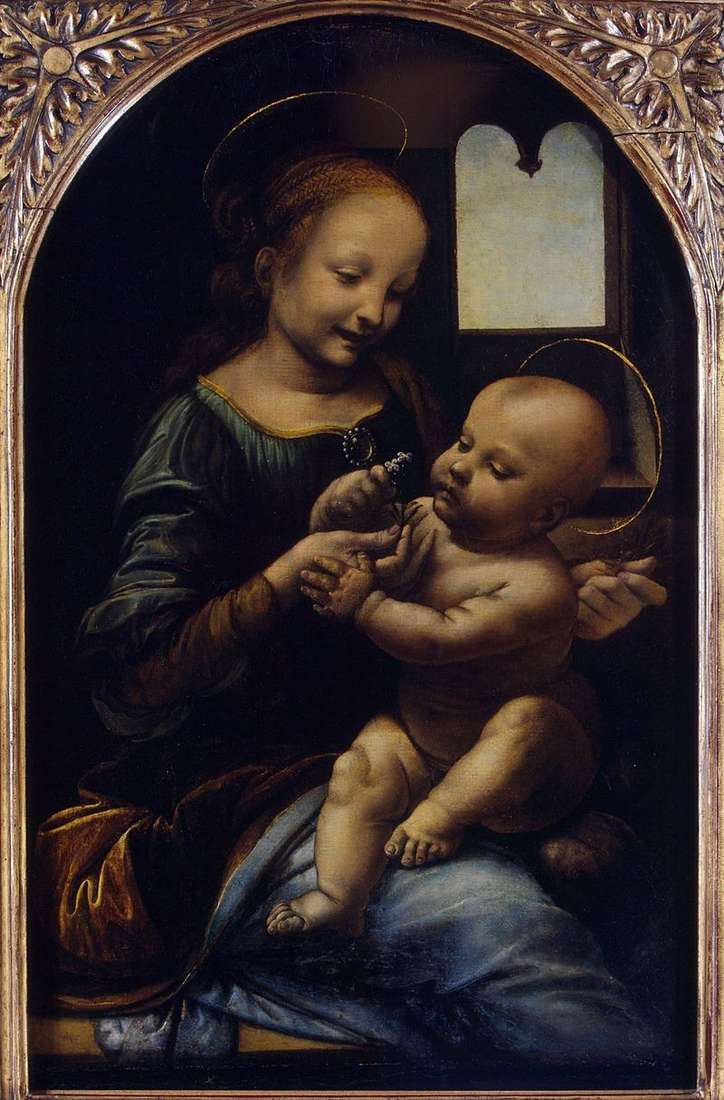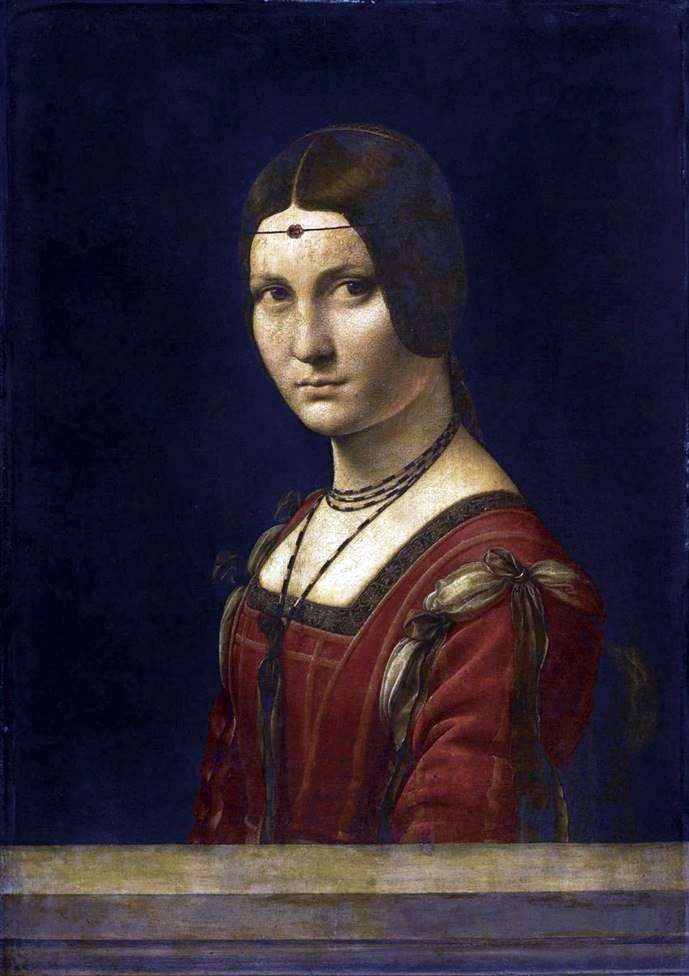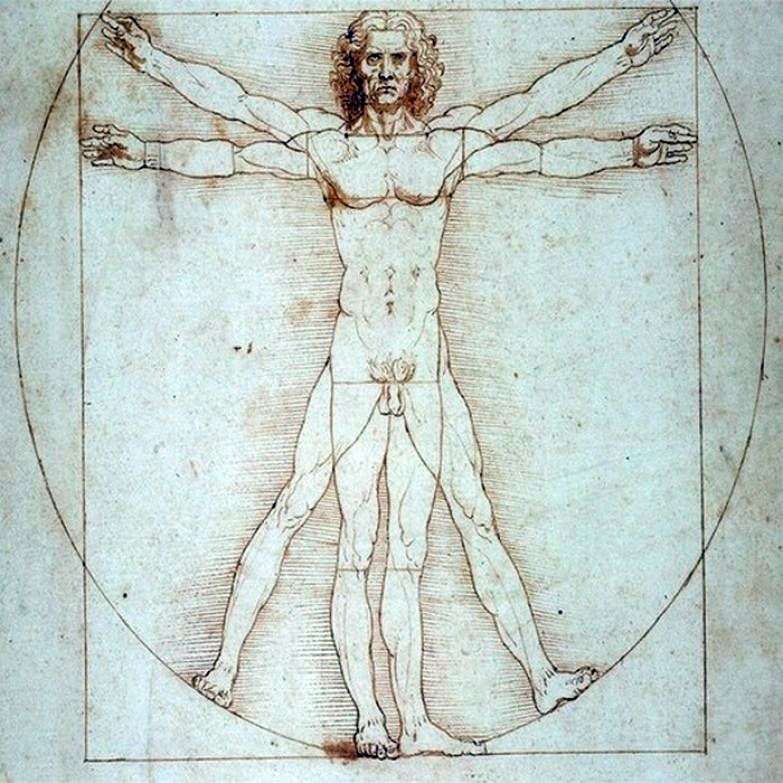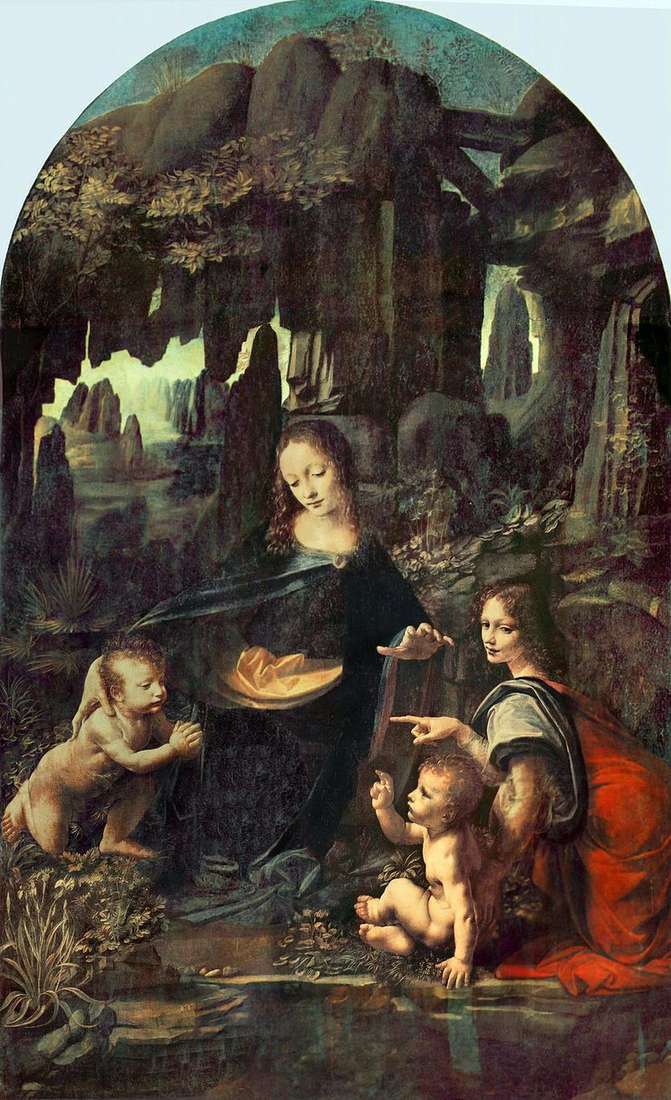
The painting by the artist Leonardo da Vinci “The Madonna with a Spinning Wheel” was written in the first decade of the 16th century, presumably during the stay of the great master in Milan. The work of the artist has another name, “Madonna with a spindle.” The size of the picture is 50.2 x 36.4 cm, wood, oil. The painting was created specifically for the Secretary of State of the King of France, Louis XII Florimand Robertet. A painting by the great painter of the Renaissance depicts the Madonna, sitting on the background of a mountain range. She has a baby Jesus on her lap, holding a wooden spinning wheel in the shape of a cross.
According to one of the apocryphal Gospels, the Virgin Mary in the house of Joseph worked on the manufacture of purple yarn for the temple veil. Leonardo da Vinci in his painting used this apocryphal story. The Infant Jesus holds a spinning wheel in the form of a cross, which symbolizes his acceptance of his destiny. Madonna, according to the plot of the picture, can not yet accept the destiny of her divine son for the heart, and therefore the hand of the Virgin Mary is raised in a protective gesture. Researchers creativity of Leonardo da Vinci believe that the painting “Madonna with spinning wheel” Leonardo da Vinci only started, and finished the pupils of his studio – Ambrogio de Predis, Bernardino de Consti or Boltraffio. However, the merits of the picture does not detract from this.
In 2003, the painting was stolen from the Dramlenrig family castle of the family of the Dukes of Baklleu, which is located in the Scottish county of Dumfries and Galloway. The painting by the artist Leonardo da Vinci “The Madonna with a spinning wheel” was in the private collection of the Bacclay family for more than 200 years and was exhibited in the gallery of the castle for visits by all art lovers. To sell the stolen painting was theoretically almost impossible. Four years later, the kidnappers were arrested, the picture was returned to the owner and reopened for visits.
Until now, also preserved the hand belonging to the hand of Leonardo da Vinci sketch of the picture, the picture “Madonna with spinning wheel” or otherwise “Madonna for yarn.” The characteristic of Leonardo da Vinci as an artist would be incomplete, if not to say of him as a master of drawing, in the history of which he belongs to one of the most honorable places. Nominally in its functions, the drawing in Leonardo’s works, like that of other masters of that time, had an auxiliary significance.
These are compositional sketches and sketches, careful studies of heads and figures, draperies, landscape and all kinds of other sketches. But at the same time the drawing was for Leonardo da Vinci something more: with a specific storehouse of his artistic and scientific talent, the picture was for him one of the forms of active perception of the world in a broader sense. We are no longer talking about the huge number of drawings and drawings that do not have a special artistic purpose in his scientific notes, although it is often difficult for a brilliant master like Leonardo da Vinci to make a clear distinction between actual graphic artwork and drawings of a scientific and auxiliary character.
Many of the latter – even, for example, his sketches of plants in notes on botany – also have great artistic expressiveness. Sometimes sketches that have arisen in a certain scientific and technical context are transformed into the creation of a powerful artistic fantasy, for example, the so-called “Arsenal” in 1487 – a drawing that gives a semi-fantastic image of the foundry.
 Madonna Litta by Leonardo Da Vinci
Madonna Litta by Leonardo Da Vinci Bacchus by Leonardo Da Vinci
Bacchus by Leonardo Da Vinci Self Portrait by Leonardo Da Vinci
Self Portrait by Leonardo Da Vinci Self-portrait by Leonardo Da Vinci
Self-portrait by Leonardo Da Vinci Madonna with a flower (Madonna Benoit) by Leonardo da Vinci
Madonna with a flower (Madonna Benoit) by Leonardo da Vinci Beautiful Ferronera by Leonardo Da Vinci
Beautiful Ferronera by Leonardo Da Vinci Vitruvian Man by Leonardo da Vinci
Vitruvian Man by Leonardo da Vinci Madonna in the rocks (Madonna in the grotto) by Leonardo da Vinci
Madonna in the rocks (Madonna in the grotto) by Leonardo da Vinci